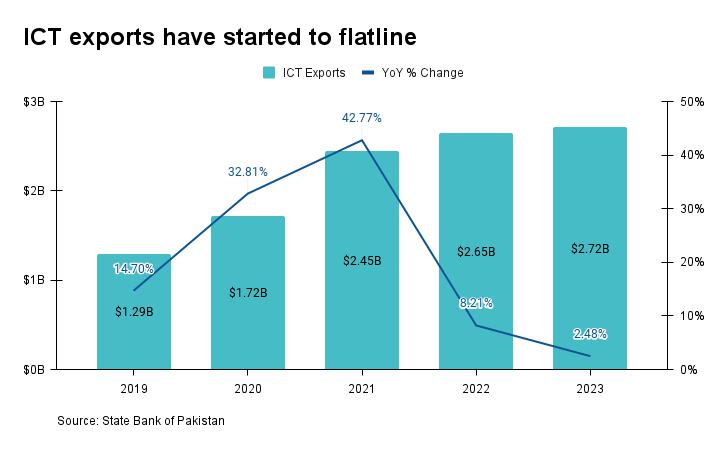In fact, developing economies accounted for only 16.4% of global FDI back in 1990. However, by 2022, this had grown to 70.8%. At first, this money built manufacturing facilities across the world but the last 20 years have made services extremely attractive too, giving unmatched opportunities to developing countries to leap forward. The Indian software industry shows this – it now competes with giants like IBM and EDS for big software and IT contracts.

New technologies have enabled businesses and people to offer products and services cheaply to customers worldwide. Platforms like the Google Play Store and Apple’s App Store give even small developers access to billions of potential buyers globally.
Unfortunately, we have seriously lacked in attracting foreign money compared to similar countries. Pakistan’s FDI money coming in in 2022 was $1.4 billion, much less than Bangladesh ($3.5 billion) or Egypt ($11.4 billion). While we urgently need to attract foreign money across industries, tech is especially important.

Despite having key ingredients in place and fast growth, Pakistan’s tech industry hasn’t grabbed foreign investors’ attention. In 2023, local startups only raised $75 million, far less than Egypt or Indonesia. Information technology did even worse, attracting just $41 million in foreign money.

While it’s impressive how local entrepreneurs have grown without much foreign money, however, to become global tech leaders, we need help from others – and their money. We need that money to train talent to match regional rivals, improve infrastructure, and provide profitable exit opportunities for founders to spur more growth.
Make no mistake, making ourselves an attractive place for people to invest will be extremely hard and requires work from all parts – government, industry, and local investors. To start, the government must build trust and make good reasons for anyone to put their money into Pakistan’s tech companies. That includes cutting red tape and providing tax breaks. Investors also must be able to take their earnings out of the country in the form of dividends or divestments.
It was only in July 2023 that the government approved a new policy to attract foreign investors. This policy was based on four main pillars: reducing the cost of doing business, streamlining business processes, facilitating ease of doing business through industrial clusters and special economic zones, and promoting convergence between trade, industrial, and monetary. However, the state must actualise these policies and quell the fear of prospective investors.
Meanwhile, the domestic IT industry and investor community need to become proactive in selling their story. That means producing regular marketing material, conducting roadshows and most importantly, actually put the money where their mouth is. Basically, actually start making investments themselves through mergers and acquisitions in order to create liquidity in the system.



0 Comments